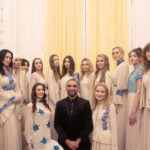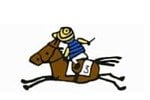Couture sewing – the detail goes beyond construction, but what exactly is couture?
To say couture sewing is solely about hand-sewing is an injustice to the craft; it is so much more than that. Couture sewing is a craft in its own right combining the skill of hand-sewing techniques, fabric underpinnings, fabric construction, fine detailing, basting, testing and fitting garments with some usage of the sewing machine.
It’s a craft that is slowly declining as the expertise of these fine couturiers is not being passed on to future generations. The fashion landscape talks from a perspective of time saving, as opposed to ‘time savouring’. In addition to home sewing as a child, I was also taught couture sewing at Secondary School, but these skills are no longer on schools curriculums, which in my opinion is a crying shame.
The workmanship that goes into couture attire is not the same as mass production garments. From the initial pattern, these garments start their journey as a toile first, a mock-up of the styled design. Cut out singularly (as opposed bulk batches), thread basted, marked, sewn by hand and machine, with constant pressing; all this happens before going anywhere near the main fabric that the finished garment will be made in. The construction process is labour intensive, it’s not one technique that completes the project, it can be several with new inventions along the way.
One aspect that I personally find fascinating is the inventions created along the way as a result of the construction. The example shown is from a raw silk dress I designed and made. The technique used here is a Dior kickpleat, the invention of Madame Marguerite, couturier at Dior 1940s/50s. A kickpleat can be found in dresses and skirts: when you kick your leg out whilst walking, the pleat allows for extra room and comfort when mobile. In this instance you have an additional layer of embroidered silk fabric which adds another element of design interest and detail as well as being functional.
The success of a kickpleat is dependent on the fabric being used. For example, if you were to make a kickpleat using heavy fabric, the additional bulk from seams resting on your thigh, or lower on your calf (as examples) would not be aesthetically pleasing – your eye would be drawn to this additional bulk laying underneath. And on wearing, the pleat would stand away from your body; it’s not a flattering look.
It’s examples such as these, in construction, which represent a unique skillset that is not only rewarding to the couturier but also the wearer of the finished garment. More needs to be done in support of keeping this craft alive as well as future employment opportunities.
I support technological advancement, however I am concerned at what cost to our creative abilities, using our hands to construct and create. Alongside our imagination, the techniques of couture sewing are as varied as they are distinctive.
Look at it this way, when visiting fashion museums, viewing costumes and garments from yesteryear, one thing is clearly evident: the workmanship, attention to detail and the fact that all that went into making the garment presented has lasted the test of time. We need to preserve this artisan workmanship.

Coral Turner is a couture designer based in London. Specialising in unique ready-to-wear Race Day Fashion, her emphasis is focused on the way clothes make you feel. In addition a dressmaking service is also available. “My dresses are just like you… one of a kind.” See her website at https://coralturner.com








